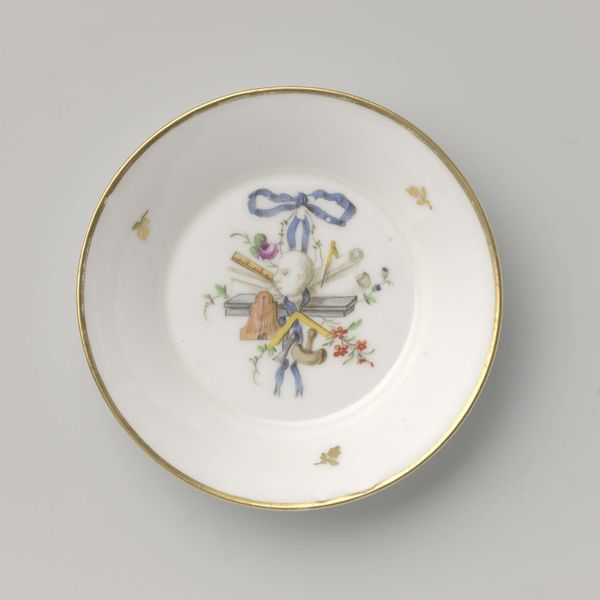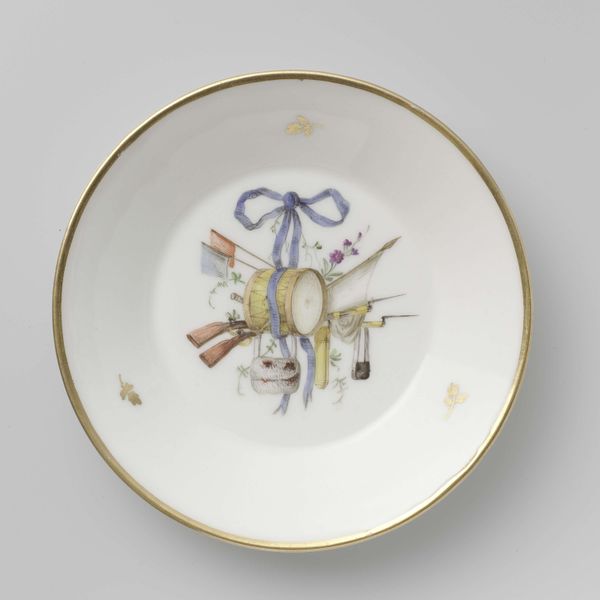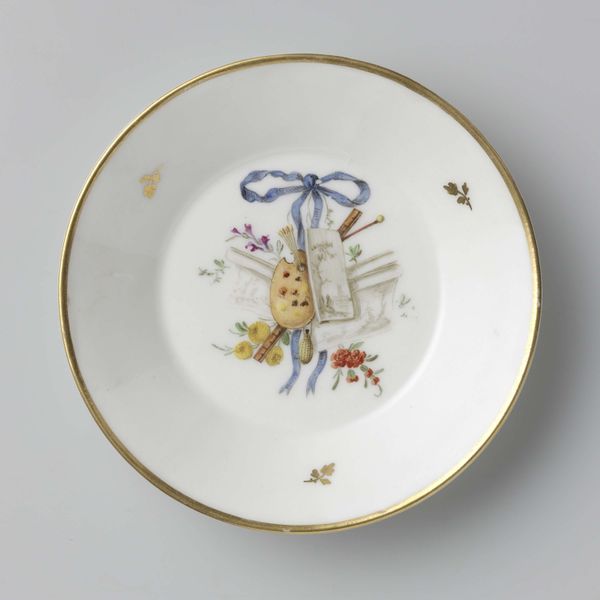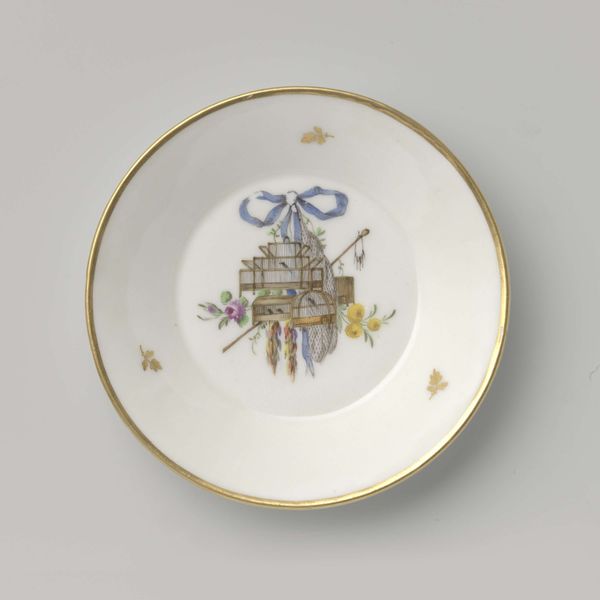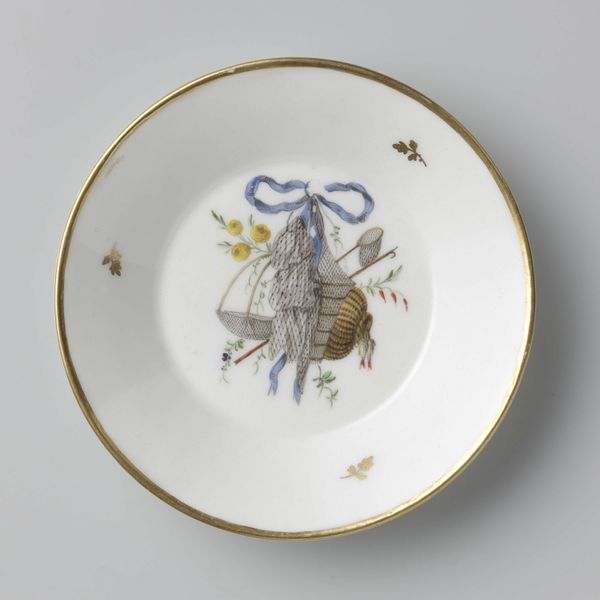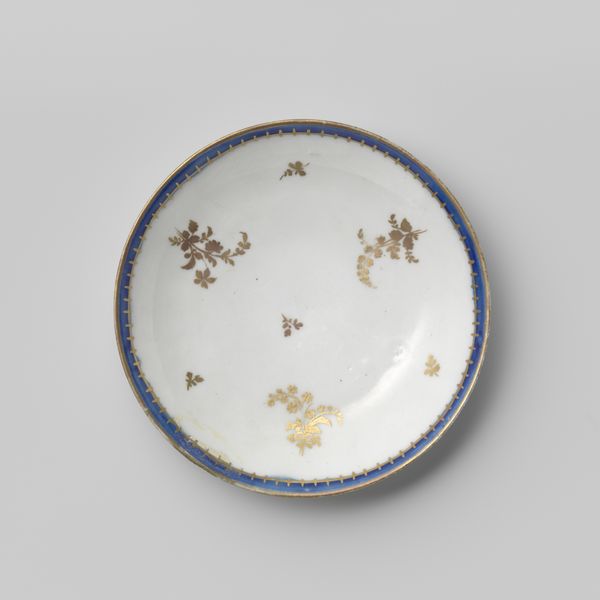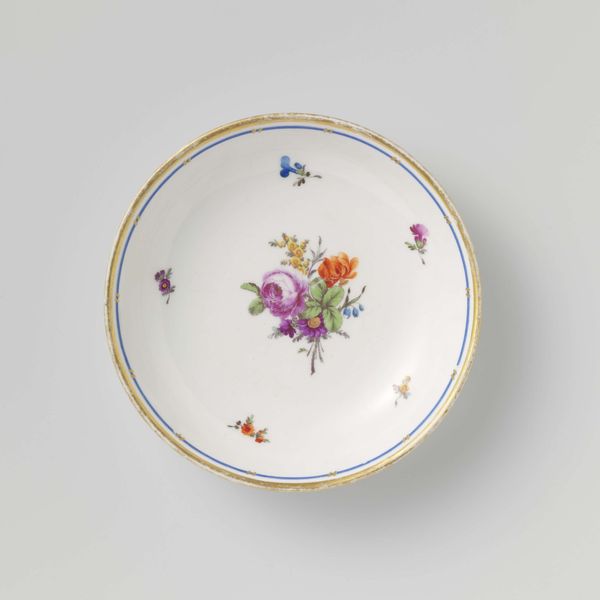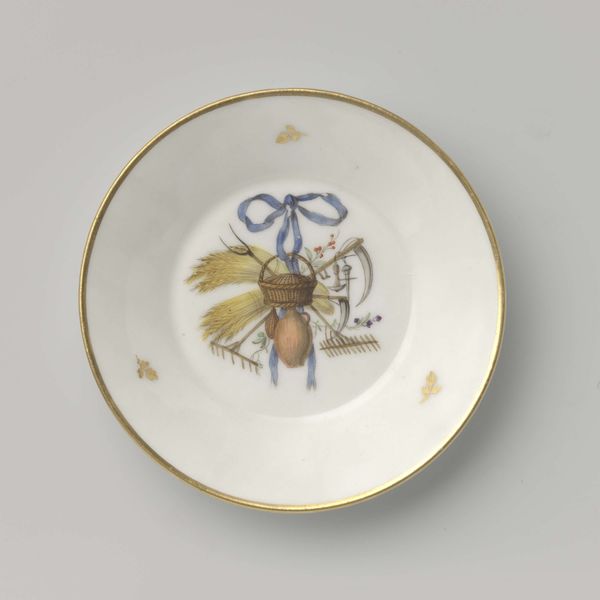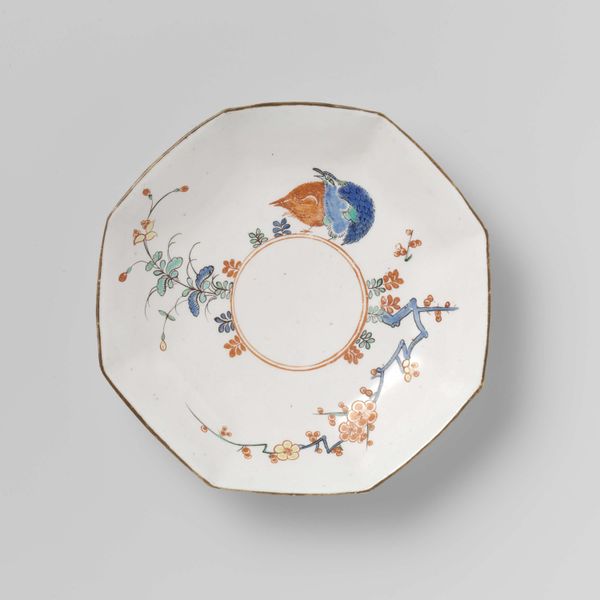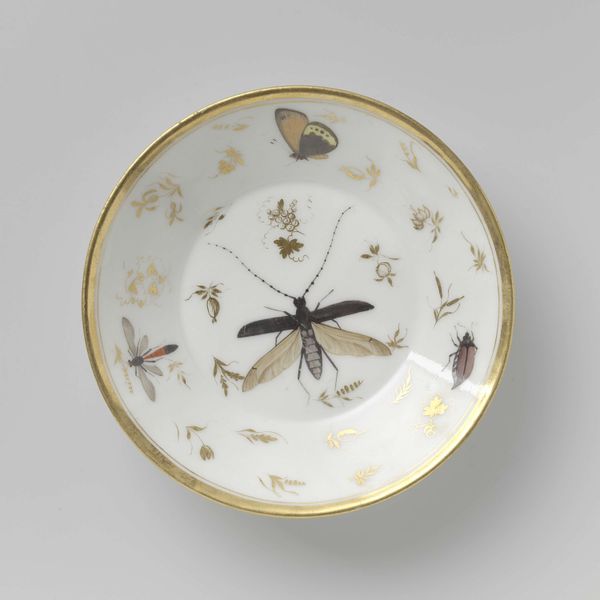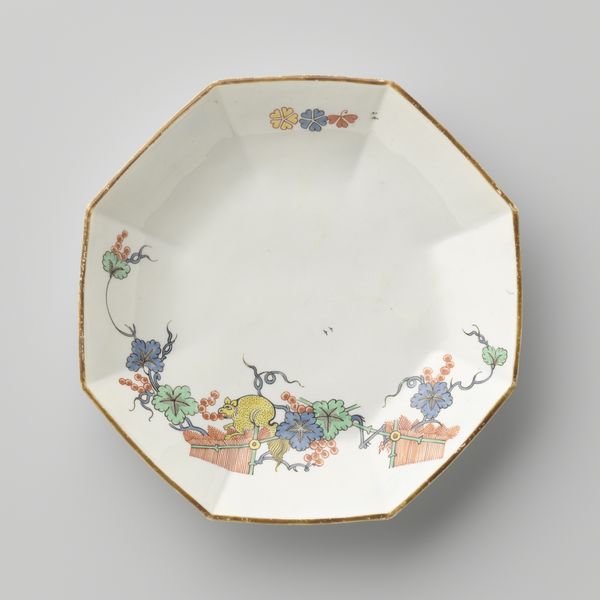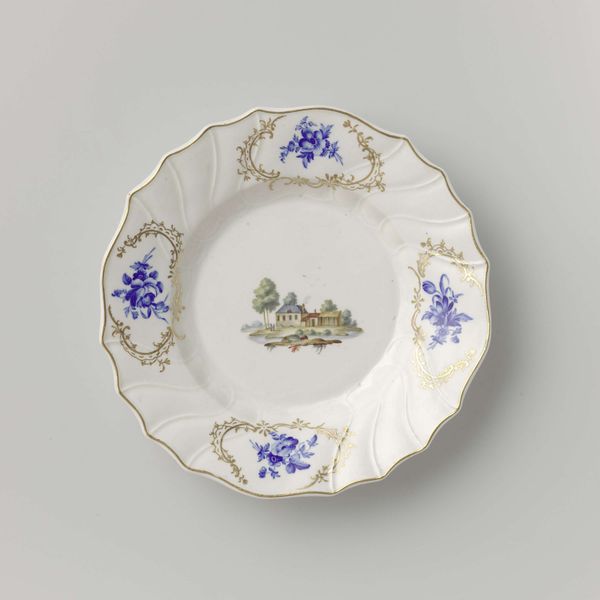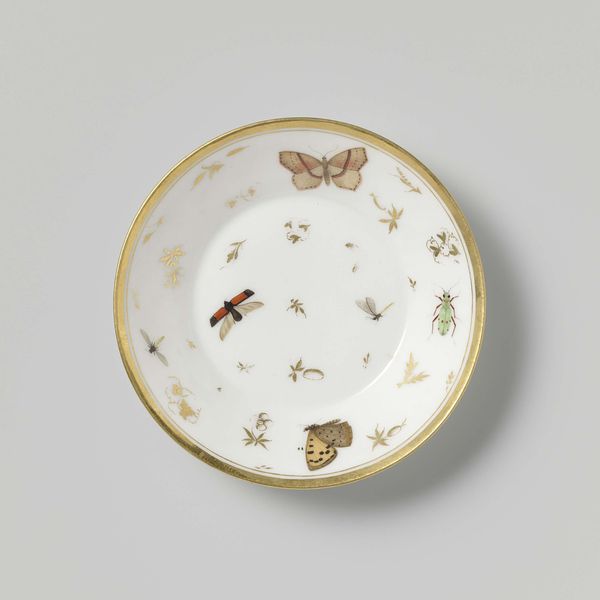
Schotel behorend bij een theeservies met decoratie van trofeeën aan gestrikte linten before 1814
0:00
0:00
Dimensions: height 2.4 cm, diameter 13.2 cm
Copyright: Rijks Museum: Open Domain
This is a porcelain saucer, made by the Koninklijke Porseleinfabriek Dommer & Co. in the Netherlands, at an unknown date. The central motif shows musical instruments tied with ribbons. But why porcelain, and why these images? Porcelain teaware in Europe was once a luxury, and ownership signaled a certain level of social status. The Dutch East India Company's trade made tea drinking a fashionable social ritual that demanded refined objects like this saucer. The musical trophies are a clear demonstration of the owner's good taste, leisure time, and education. The decoration, therefore, is less about the artist’s personal expression and more about the social world in which they and their patrons existed. Examining the company's records and the history of Dutch trade, alongside studies of Dutch social customs, can all reveal the cultural values that made an object like this meaningful. By understanding these historical contexts, we gain insight into the social role of art and the values it represents.
Comments
No comments
Be the first to comment and join the conversation on the ultimate creative platform.
